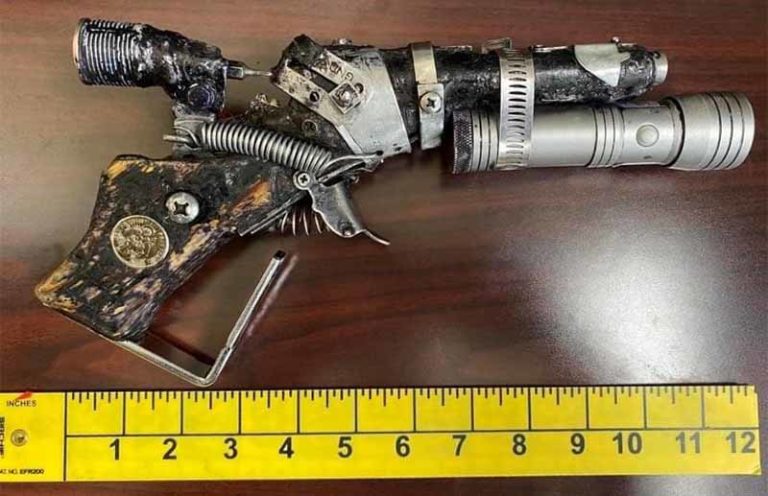
Homemade firearms have come a long way thanks to technologies like 3D printing, but the crude zip gun remains a timeless beacon of 2A rights.
A folk term, a “zip gun” is essentially a crude improvised or homemade firearm. It's typically a single-shot design using a primitive method for locking the breech and a very simple firing mechanism.
Obviously, not all homemade firearms are created equal.
An AR assembled at home, a gun built from a kit, a 1911 pistol patiently hand-fit to match tolerances are technically homemade. However, so is a crude amalgamation of scrap metal that would make a Sten gun look like the Mona Lisa.

So while all zip guns are homemade firearms, not all homemade firearms are zip guns. Essentially, a zip gun refers to an improvised single-shot firearm using parts easily found at Home Depot or in a scrap heap.
Zip Guns vs 3D Printed Guns vs 80 Percent Firearms
As we've determined, is a crude, cheap, homemade firearm that's usually single-shot and made from common household items. There are, however, other firearms built–or nearly built–from the ground up.
3D Printed Firearms
Thanks to recent pearl-clutching, 3D printed firearms are among the best known. Counter to the zip gun, the firearms are much more sophisticated and require special manufacturing equipment.
As its name implies, 3D printed guns are created from, you guessed it, a 3D printer. The receiver or a entire firearm is manufactured by stacking microscopic bits of polymer together until the part or gun is made.
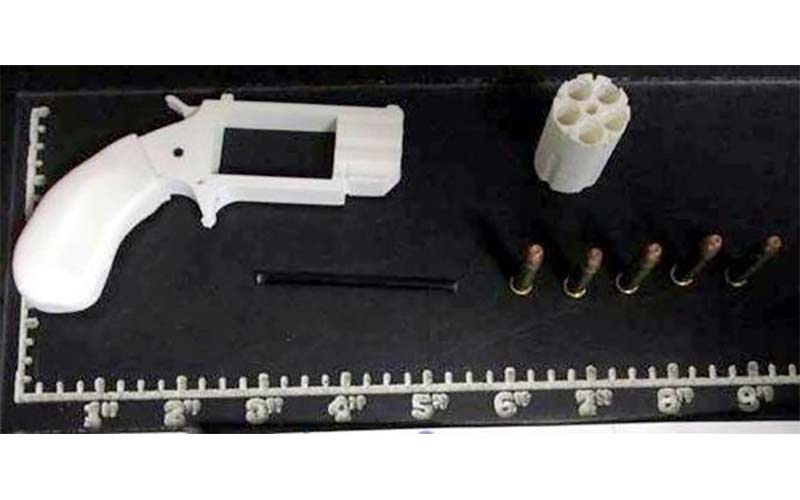
To create one, however, a person needs the plans just like you would if you where to to manufacture a part with a CNC machine. You either find the files on the internet or create them yourself using computer-aided drafting (CAD) software.
80 Percent Firearms
These are unfinished firearms essentially. The basic shape of the lower receiver–in the case of an AR–or frame–in the case of a handgun–is there. But material enough remains it does not meet the ATF's definition of a firearm.
You, the kitchen-table gunsmith, cut away the material to finish the component. In the case of pistol frames, you'll use of a jig and a drill to finish. The 80 percent AR receiver, on the other hand, requires actual milling–if you aim to do it correctly.
The History Of Improvised And Homemade Firearms
For several centuries following the advent of gunpowder-based weapons, almost all firearms produced were essentially homemade. Before the industrial revolution and the standardization of parts, the only unifying factors between gun designs were their basic operating principles.
The first guns were the fire lances of medieval China, bamboo tubes charged with gunpowder and filled with whatever the soldier could get as shot. These were single-shot weapons, occasionally used in battery, much like volley guns.
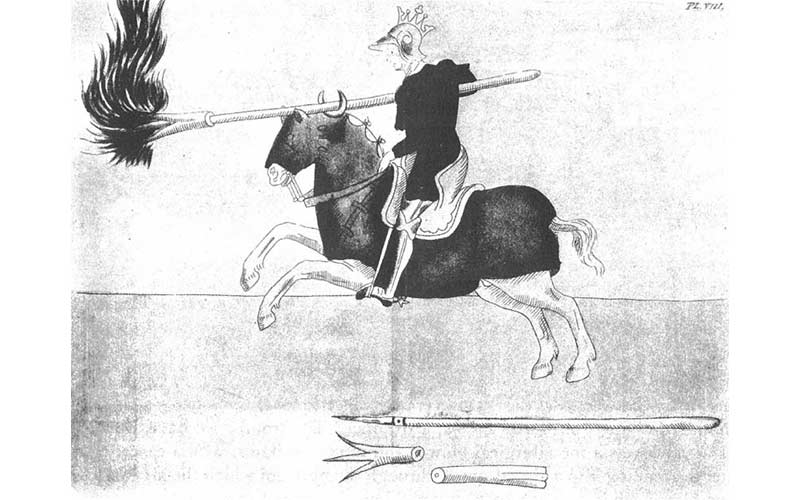
As firearms technology progressed, so too did the skills required to make them. Fire lances evolved into metal-cast hand cannons, requiring blacksmithing knowledge to produce. These gave way to smoothbore muskets, featuring increasingly complex ignition mechanisms.
While almost anyone could drill a flash hole into a barrel, the introduction of matchlocks, wheellocks and flintlocks resulted in the need for much more specialized labor.
The advent of rifling improved the efficacy of long guns at the cost of more complex manufacturing, but it hardly meant the end of simple smoothbore firearms. The zip gun is a testament to this.
Is It Legal To Make A Zip Gun?
Bear in mind this isn't legal advice; we're just talking about an overview of publicly available information about laws. Make sure you talk to an attorney if you want to be certain what you're doing is legal.

Federal law (specifically the Gun Control Acts of 1934 and 1968) doesn't prohibit an otherwise non-prohibited person from building a firearm for personal use. Registration, serial numbering, a background check and so on aren't required.
According to federal law, the only requirement is that it must be detectable by a metal detector and that you don't sell it.
However…any firearm made to look like anything other than a gun, such as a cane gun, is classified as Any Other Weapon under the NFA. AOWs are Title II firearms and require a tax stamp and Federal paperwork.
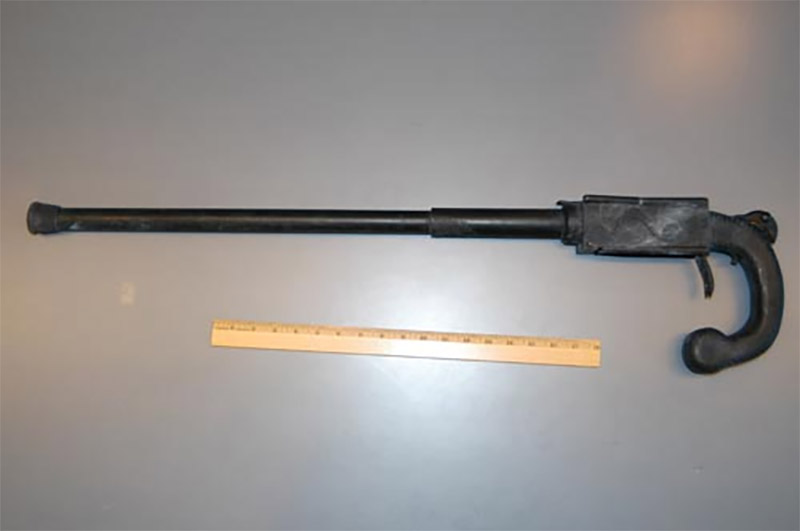
That's it…as far as the letter of the law is concerned. Of course, how federal and state agencies interpret and enforce the law is something else entirely.
Buy, Build, Shoot Kits: The ATF's New Rule
The Biden administration has made gun regulation a priority, and among the proposals is a crackdown on “ghost guns.” In April of 2022, the Biden administration announced a new rule impacting “buy, build, shoot” kits.
The Bureau of Alcohol, Tobacco, Firearms and Explosives amended its official definition of firearm frames and receivers. Essentially, any kit or collection of parts that can be assembled into a firearm is a firearm in the Fed's eyes and must have a serial number, plus requires a background check to purchase. The questionable rule change came about in April 2022 and takes effect in August of 2022.
Vaguely written, confusion abounds as to what this rule change means. For certain, it sounds as if 80 percent kits—including jigs, guides, slides and other components—require serialization. Where it’s foggy are stand-alone 80 percent lowers.
Some legal experts say these are exempt, others that they are not. A sticky wicket for certain, and one that gun owners are likely to hear much more about as time goes on.
State Laws On Homemade Firearms
A number of states preceded that ATF ruling by passing laws requiring serialization and background checks of any homemade or kit firearm.
To date, California, Connecticut, Maryland, New York, New Jersey, and Washington state passed laws banning “untraceable” (non-serialized) homemade firearms. The language is similar to the ATF's ruling on “buy, build, shoot” kits.
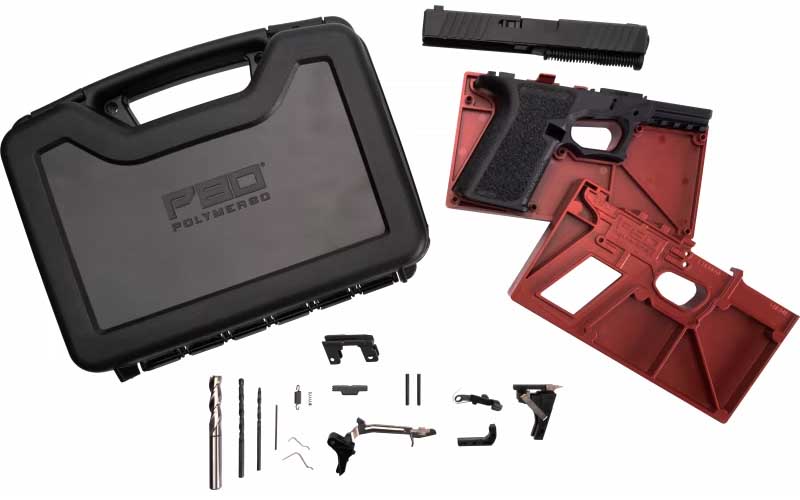
The city of Denver likewise enacted such an ordinance. For those unaware, Colorado did away with its state preemption laws pertaining to firearms, allowing municipalities and jurisdictions (think parks department) to enact their own firearms laws. Gun laws in Denver, Vail and other cities are much more restrictive than in the rest of the state.
Time will tell just how overreaching the new federal policy will prove and how it will affect legal gun owners. Until the rule is enacted, however, it is still in accordance with federal law for a nonprohibited person to build their own otherwise legal firearm using any means or methods that they wish, “buy, build, shoot kit” or not.
Zip Gun Types
Zip guns are hard to group into “classes” because of their impromptu nature. However, there are a few common features that many of them share.
Barrel Types
The barrel is typically a defining feature–more specifically, pipes versus pens.
Pen guns use the body of an ink pen for a barrel and they are typically made to fire a small-caliber cartridge. These designs are limited to cartridges that fit inside the body of a pen, typically some variant of a .22-caliber rimfire.
Pipe guns, on the other hand, chamber a wider variety of cartridges–pistol, rifle and shotgun shells. Generally, zip gun aficionados tend toward lower-pressure options, given most pipes have a low tolerance to the pressure produced.
This detail, combined with the abundance and power of shotgun shells, means that shotgun pipe guns are almost certainly the most common variant. During World War II, slam-fire shotguns boasting crude stocks saw action against the Japanese in the Philippines.
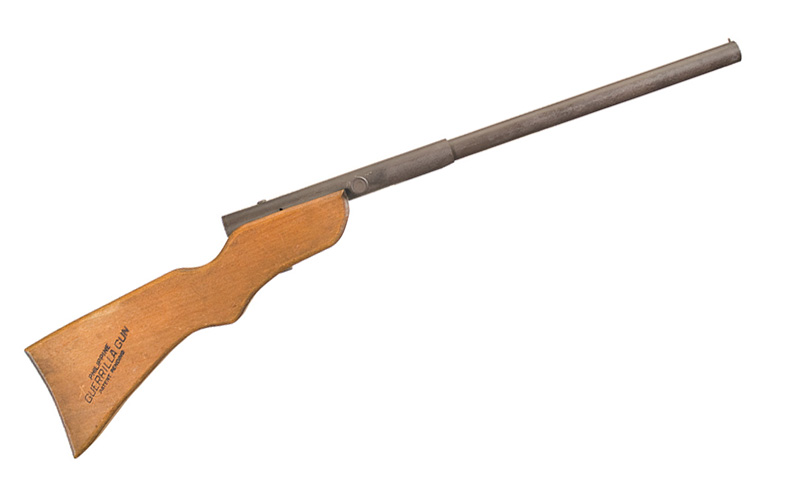
Firing Mechinism
Speaking of slam-fire designs, another way to classify zip guns would be the firing mechanism.
Slam firing requires the user to manually strike a firing pin into the primer or slam the primer into a fixed firing pin almost like a mortar. The Richardson Philippine slam fire shotgun pictured above is obviously an example of the latter.
Other zip guns use some sort of mechanical tension to fire, such as a spring or even rubber bands. Typically a nail or a like object acts as the firing pin. The sophistication of the lock mechanism varies wildly, but the nicest examples may even have a pistol grip or stock fashioned for it.
Covert Zip Guns
Zip guns also have a history of use by spies and intelligence agencies. They're typically small-caliber weapons and often disguised as common items like cameras, cell phones and, of course, pens.

The myriad improvised and covert weapons left some marks in pop culture, inspiring the Golden Gun in the eponymous James Bond novel and movie, the double-barrel plastic pistol in the Clint Eastwood film In The Line Of Fire and of course the use of the Sedgley OSS .38 caliber “glove pistol” in Inglorious Basterds.
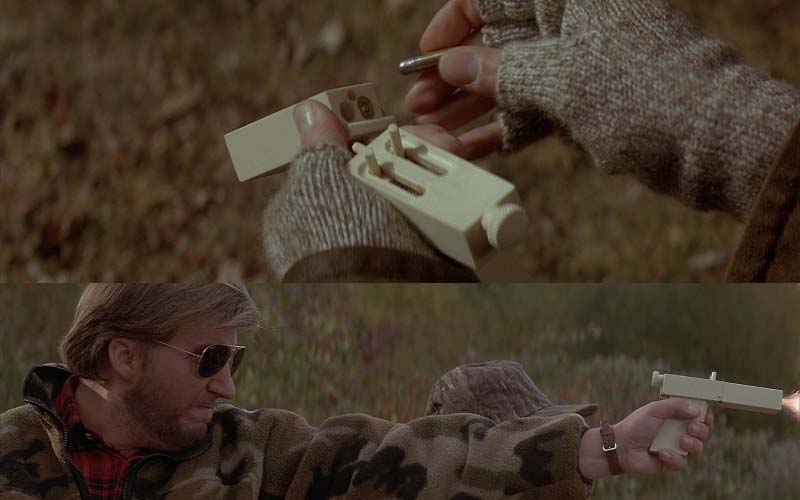
How A Zip Gun Is Made (In Case You Were Curious)
First off, should you?
Well, you're dealing with a lot of pressure (thousands of pounds per square inch) when engineering a firearm. And if something goes wrong that pressure and bits of metal and other material have a good chance of ending up in your hand–if you're lucky.
Furthermore, as we've established, homemade firearms are illegal in many states and the same rules apply to improvised guns as to factory-made–if you aren't allowed to legally possess a firearm at all, well that includes zip guns.
Overall, unless you're living in a post-apocalyptic hellscape, à la Cormac McCarthy's The Road, you shouldn't whip together your own gun from the scrap heap. If you have a from-scratch itch that demands scratching, look in the 80-percent class of firearms. Doing those correctly should provide enough of a challenge.
That said–and for a better understanding of zip guns in general–we're going to dig into how to make one.
A lot of different designs for zip guns are out there, and making one is fairly simple.
In a very general sense, to make a zip gun you must first find some sort of tube with a method to seal the breach. The next step is adding some sort of firing mechanism and maybe even some way to hold onto the thing.
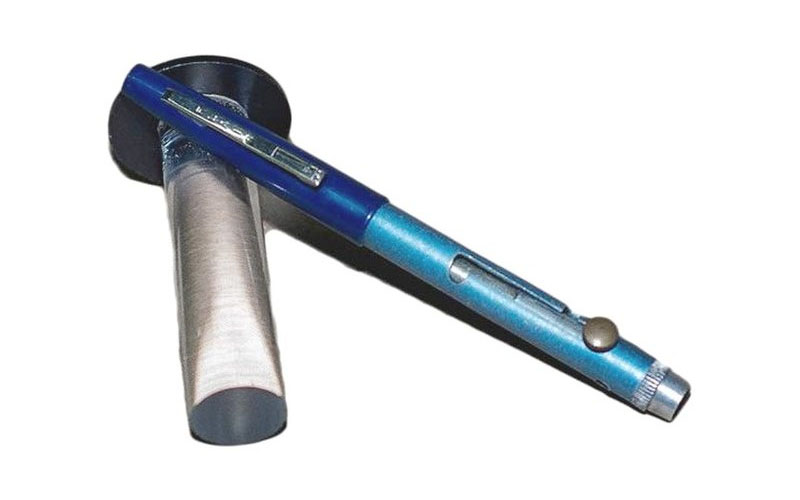
The simplest zip gun design that one can make is a slam fire pipe gun, which uses a common metal pipe with a threaded end and a pipe cap. You tap a hole in the center of the pipe cap and put a nail in there.
A common pen gun design is to cut an L-shaped hole in the pen barrel, then use the barrel from a door latch as a bolt. You add springs in the pen barrel forward of the bolt, which compresses as you draw the bolt back and locks into the recess.
Add a piece of a nail to make a firing pin, and cut a hole in the end cap. The end cap is where you load the cartridge–typically .22LR or .22 Long.
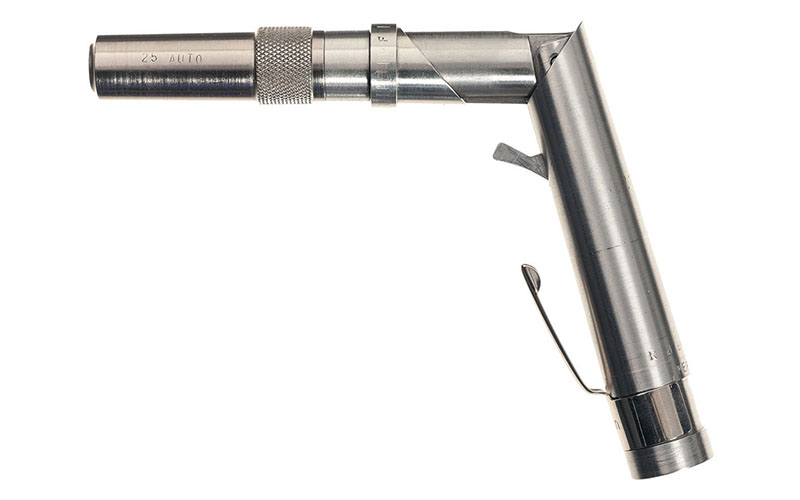
Push the bolt out of the locking recess and the spring pushes it forward, hitting the firing pin and detonating the cartridge.
There have also been some more ornate “pen gun” designs, such as the Braverman Stinger.
However, be aware any “pen gun” or homemade firearm made to look like anything other than a gun is—as mentioned—classified as “Any Other Weapon” by the National Firearms Act. In turn, it is a Title II firearm and thus requires a tax stamp to make or possess.

There are other designs, including some with crude hammers and springs and even sear designs, but you get a general idea. Get a tube, add a way to seat the cartridge, add a way to hit the primer and presto.
Kits For Zip Guns That Aren't Zip Guns
If you wanted to try a kit that can help you make a “zip gun” that isn't a “zip gun,” you could get the Pop-A 410 kit from Runway Sub Caliber, which is available through multiple online retailers.
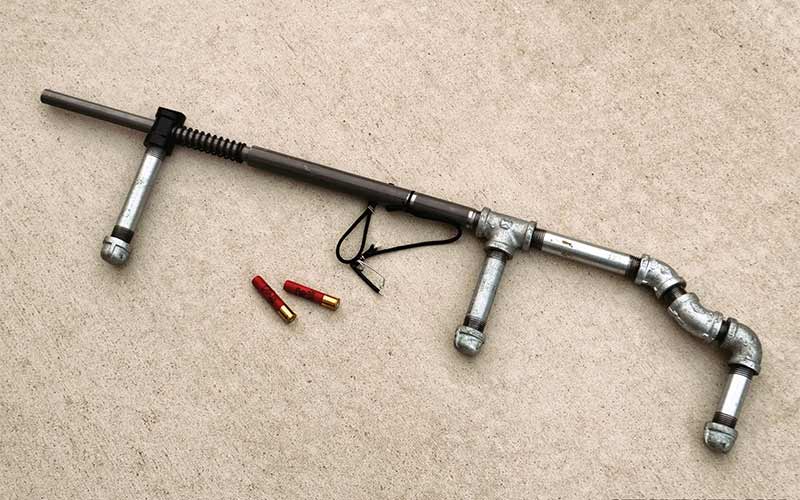
The kit gives you some of what you need to make a slam fire pipe shotgun that fires .410 bore shells, specifically the barrel which has a fitting with a captured firing pin. It's fairly similar in function to the Richardson slam fire guerilla shotgun shown above but uses different, more commonly available parts.
Besides the included firing components, you need a few short lengths of pipe, pipe nipples, pipe caps, a pipe tree and a few pipe elbows. According to OffGridWeb, you could expect to spend about $40 in parts to complete the build.
The assembled gun slams the barrel into the frame, slamming the firing pin into the primer and detonating the cartridge.
If you wanted to get a feel for what it's like to make your own gun without having to do any of your own engineering, this kit would be a way to get into it.
More DIY Stuff:
- DIY Guns: RECOIL Magazine’s Guide To Homebuilt Suppressors, 80 Percent Lowers, Rifle Mods And More
- Building A 1911
- Blue-Collar AR DMR Build
- Building A Portable Precision Rifle
- DIY AR Paint Job

Next Step: Get your FREE Printable Target Pack
Enhance your shooting precision with our 62 MOA Targets, perfect for rifles and handguns. Crafted in collaboration with Storm Tactical for accuracy and versatility.
Subscribe to the Gun Digest email newsletter and get your downloadable target pack sent straight to your inbox. Stay updated with the latest firearms info in the industry.

![Best Concealed Carry Guns In 2025 [Field Tested] Wilson Combat EDC X9S 1](https://gundigest.com/wp-content/uploads/Wilson-Combat-EDC-X9S-1-324x160.jpg)


![Best 9mm Carbine: Affordable PCCs [Tested] Ruger Carbine Shooting](https://gundigest.com/wp-content/uploads/Ruger-Carbine-Shooting-100x70.jpg)
![Best AR-15: Top Options Available Today [Field Tested] Harrington and Richardson PSA XM177E2 feature](https://gundigest.com/wp-content/uploads/Harrington-and-Richardson-PSA-XM177E2-feature-100x70.jpg)
